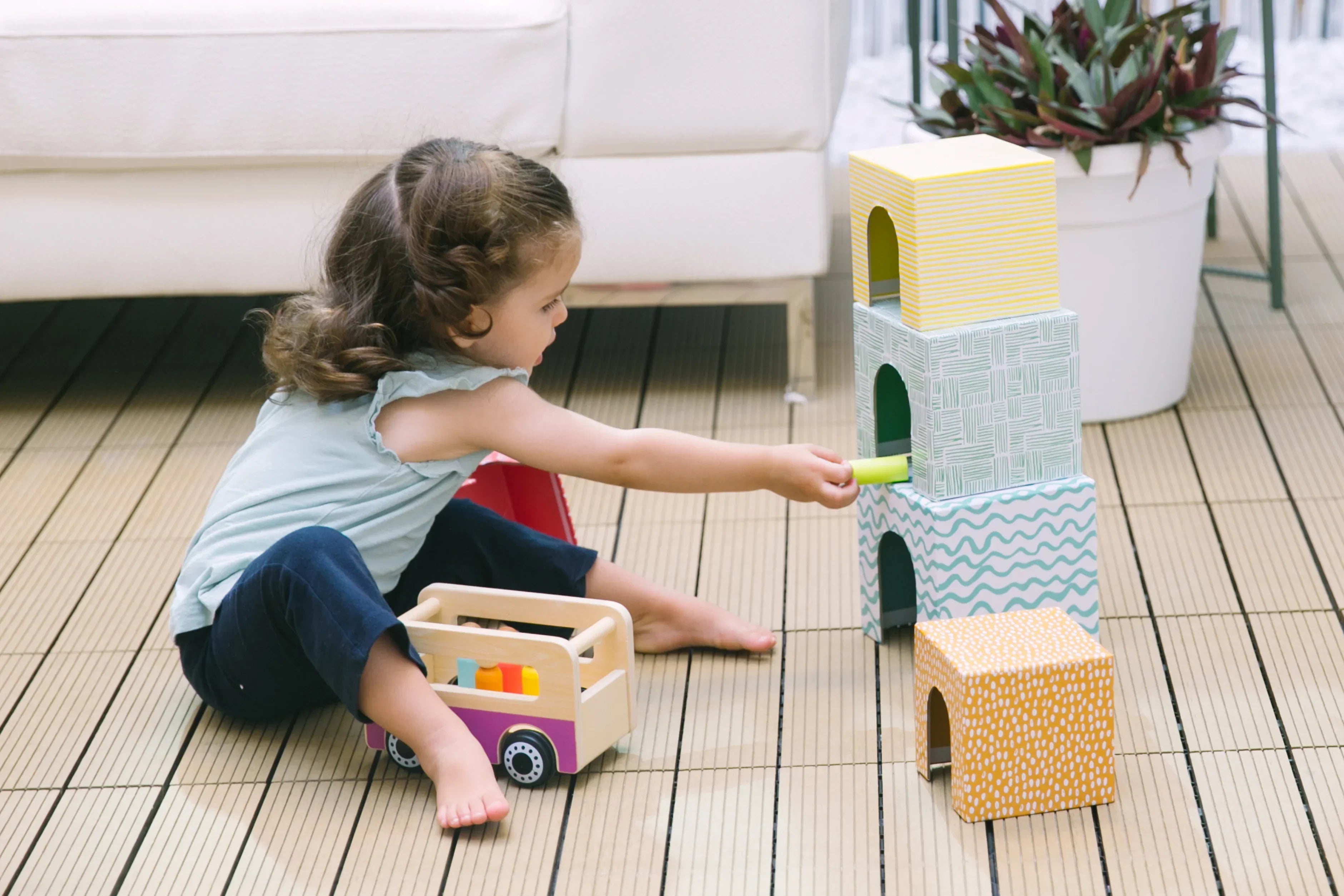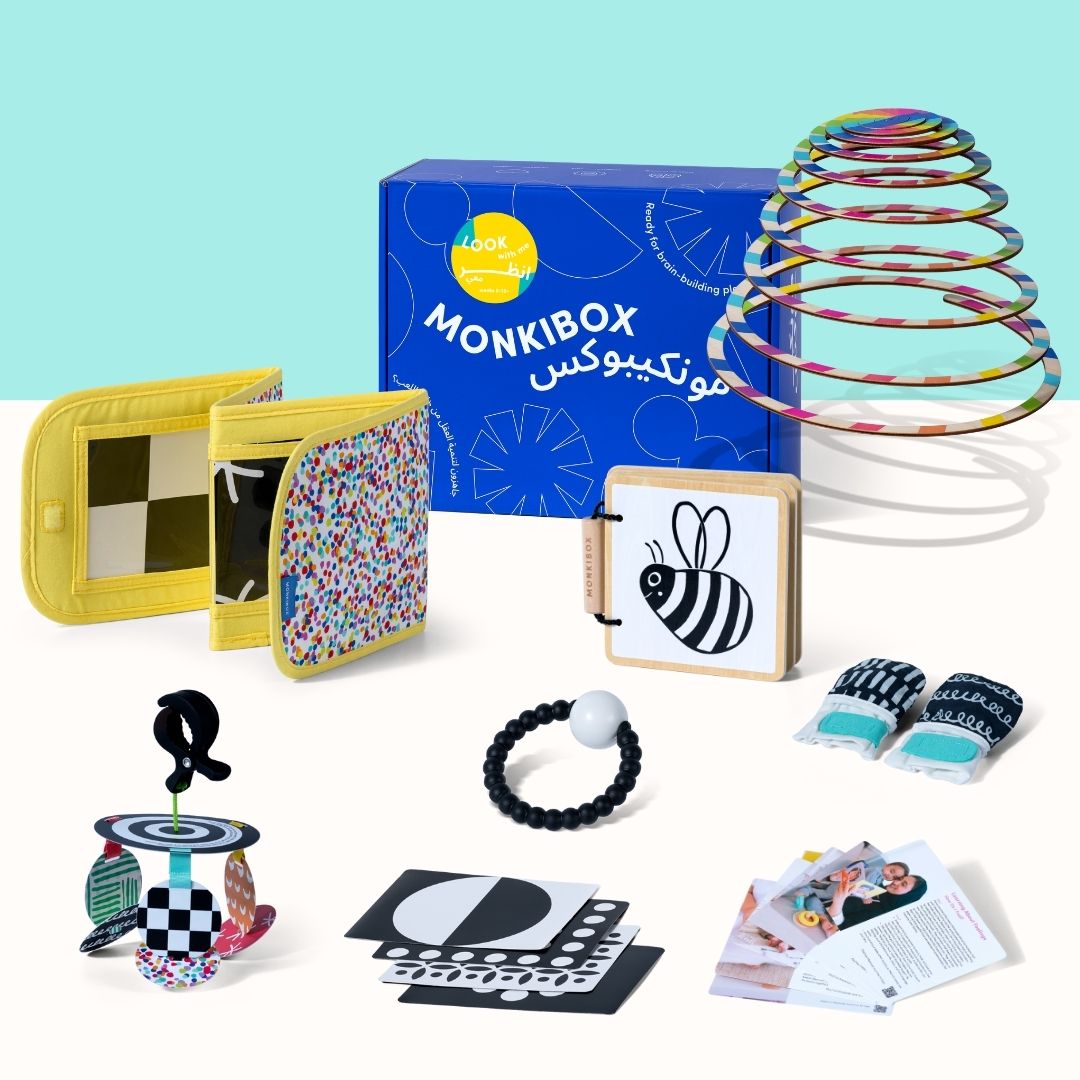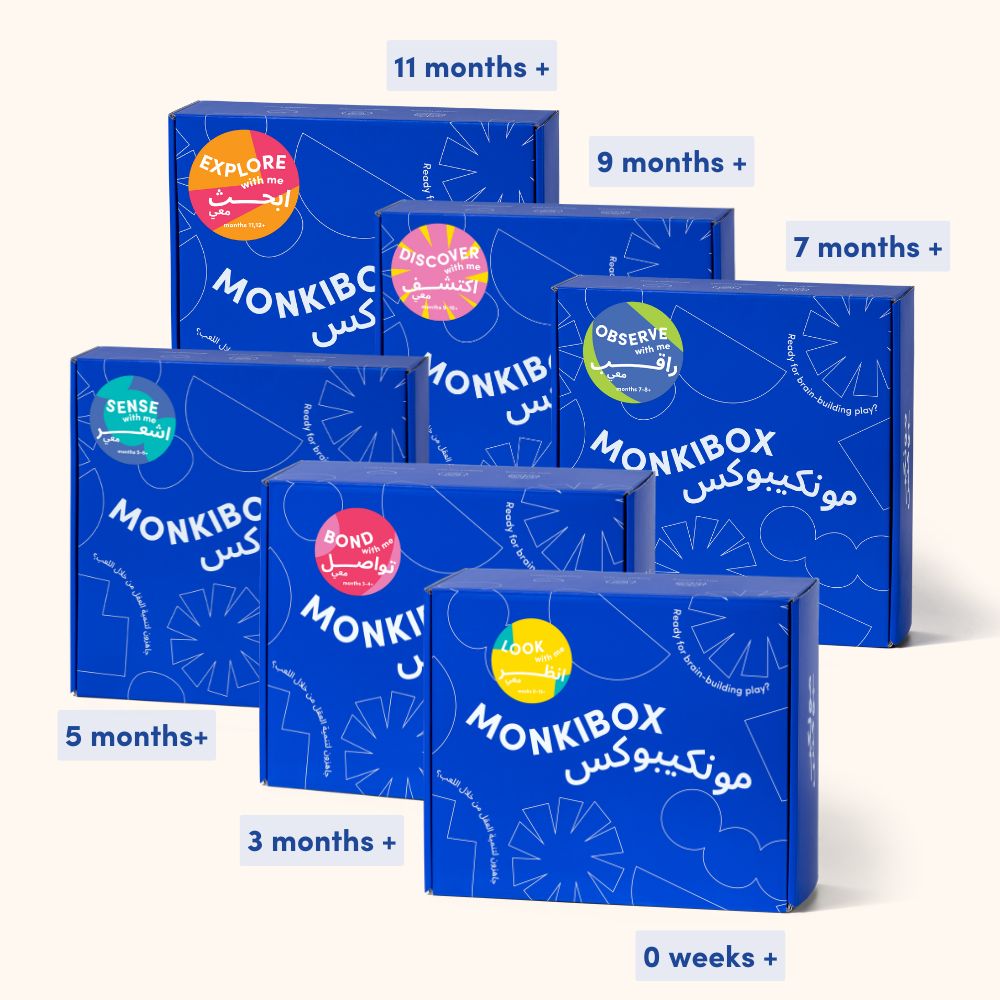هل سمعتَ يومًا أن إتقان مهارة جديدة يتطلب 10,000 ساعة؟ سواءً أكانت 10,000 ساعة ضرورية أم لا، فالفكرة واحدة: نفهم ونتعلم شيئًا ما بشكل أفضل عندما نكرره مرارًا وتكرارًا. ولعلّك لاحظتَ سلوكًا مشابهًا لدى طفلك الرضيع أو الصغير.
ما يمر به طفلك الرضيع أو الصغير هو ما يُطلق عليه خبراء نمو الطفل اسم "المخططات" ، أو بالأحرى " مخططات اللعب" . المخططات هي ببساطة مجموعة من التعليمات التي نتبعها لإنجاز مهمة ما. هذه التعليمات هي الطريقة الأكثر فعالية لأطفالنا الصغار لتحقيق هدف ما، لذا سيحاولون مرارًا وتكرارًا القيام بشيء ما حتى يفهموا كيفية عمله.
يشعر معظم الآباء بالقلق أو حتى بالإحباط بسبب هذا السلوك، ولكن بمجرد أن تعرف كيف يبدو الأمر، يمكنك توفير الفرص للتدرب والتحسين.
هناك عادةً ثمانية مخططات. يمكن أن تظهر وتختفي في أي مرحلة، وغالبًا ما تتداخل. قررنا تقسيمها إلى مجموعتين: الحركة والتمركز .
فيما يلي أربعة مخططات لعب "الحركة" وأفكار لدعم طفلك.
يمكنك العثور على منشور المدونة حول مخططات التنسيب هنا .
مخطط المسار
هل يُسقطون الطعام من كرسيّهم المرتفع أو يرمون الألعاب من عربتهم؟ يُظهر طفلكِ علامات مخطط المسار من خلال دراسة حركة جسمٍ ما أو جسمه.
ماذا يتعلمون؟
السبب والنتيجة، والمهارات الحركية الإجمالية، والتتبع البصري، والوعي الجسدي، والملاحظة، والتنبؤ.
الكلمات الرئيسية لدعم مخطط المسار
طيران، دوران، دوران، انزلاق، طفو
أنشطة مخطط المسار
- دفع لعبة من على الطاولة ورؤية مكان سقوطها
- دحرجة السيارات على المنحدر
- حاول التقاط الفقاعات.
- رمي الأشياء في حاوية (ادمج هذا مع أنشطة الحياة العملية، مثل وضع الحفاضات المتسخة في سلة المهملات، أو رمي الملابس في سلة الغسيل أو في الغسالة).
مخطط النقل
يكتشف الأطفال الصغار سريعًا قدرتهم على حمل الأشياء من مكان لآخر. عادةً ما يشير نقل الألعاب أو المكعبات بشكل متكرر في سلة أو مشاية دفع إلى استكشاف طفلكِ لمخطط النقل.
كمكافأة إضافية، تُعدّ ناقلات الأطفال الصغيرة مساعدين ممتازين أيضًا! اسمحي لطفلك بدفع عربة تسوق صغيرة، أو تفريغ أغراض التسوق، أو حمل رذاذ الماء إلى النباتات ليسقيها. عند المشي، احرصي على إعطاء طفلك سلة صغيرة ليملأها بالأغصان والصخور والأوراق ليحملها إلى المنزل (ويفضل استخدامها في الأعمال اليدوية).
ماذا يتعلمون؟
ثبات الأشياء، والمهارات الحركية الدقيقة والخشنة، والوعي المكاني، والتخطيط، والقياس (ما هو المقدار الذي سيتناسب؟)
الكلمات الرئيسية لدعم مخطط النقل
داخل / خارج، تشغيل، ممتلئ / فارغ، أكثر / أقل، ثقيل / خفيف
أنشطة مخطط النقل
- نقل الأنشطة
- عربات لنقل الألعاب
- عربة تسوق الألعاب
- سلال
- حقائب اليد
مخطط الدوران
الدوران، والتدحرج، ولفّ شيء حول آخر - كلها تجارب دوران. أي شيء دائري - عجلات، أو قشّات ملتوية، أو أن يتأرجح شخص بالغ، أو يراقب الغسالة.
بدأ كل شيء عندما أسقطت الكرة وشاهدتها تتدحرج بعيدًا، وهذا الفهم للحركة المستمرة يشكل الأساس لكل شيء من الرياضيات إلى الرياضة.
ماذا يتعلمون؟
كيفية حركة الأشياء، والحركة الدقيقة والخشنة، والسبب والنتيجة.
كلمات رئيسية لدعم مخطط الدوران
دائري، دائري، حلزوني، دوار، ملتوٍ
أنشطة مخطط الدوران
- اللعب بالعجلات في السيارات والقطارات والدراجات
- اصنع طواحين الهواء
- قم بخلط مكونات الكعكة أو اللعب بالأرز الملون أو المعكرونة إذا لم تكن مستعدًا لأنشطة المطبخ.
- استخدم كرات ذات أحجام مختلفة للرمي والإمساك والركل.
مخطط التوجيه
رؤية العالم من زاوية مختلفة تتوافق تمامًا مع مخطط التوجيه. خلال هذه المرحلة، ستجدين طفلكِ يُدير الأشياء ويقلب نفسه رأسًا على عقب، أو يشاهد من خلف شجرة.
هذا المخطط الضروري يبني الثقة في العديد من الأنشطة البدنية والألعاب عندما يصبح من المفيد توقع حركة اللاعب الآخر. يتضمن هذا المخطط الكثير من اللعب النشط للتسلق والتدحرج والانقلاب.
ماذا يتعلمون؟
الوعي الجسدي والمكاني، والمهارات الحركية الإجمالية، وتحفيز الجهاز الحسي والدهليزي.
الكلمات الرئيسية لدعم مخطط التوجيه
انقلب، رأسًا على عقب، فوق، لف، تدحرج، دار
أنشطة مخطط التوجيه
- ممارسة اليوغا
- جمباز الأطفال
- الدوران والتدحرج في الخارج
- التأرجح على قضبان القرد
- الزحف عبر الأنفاق
- اللعب على الأراجيح





